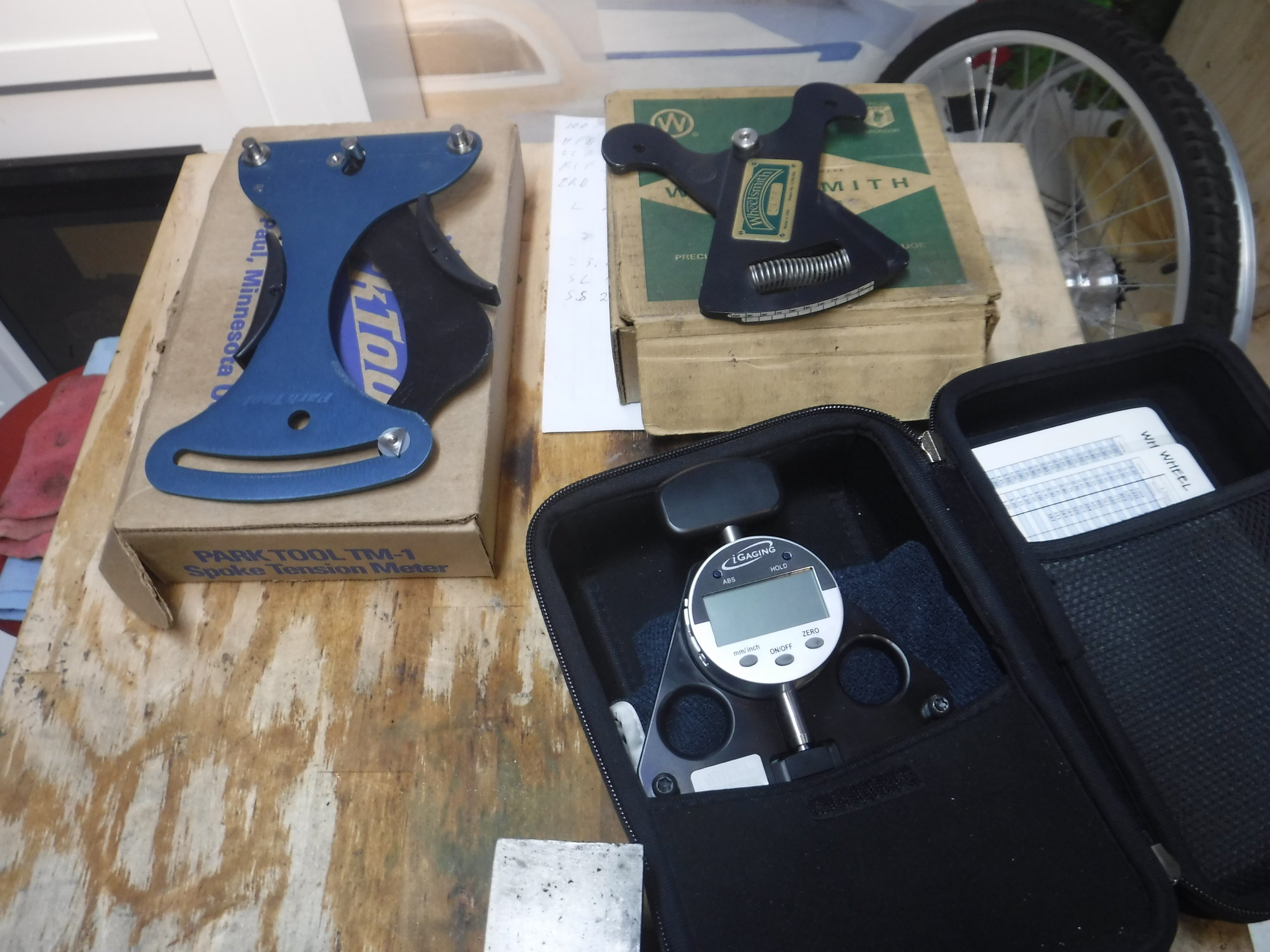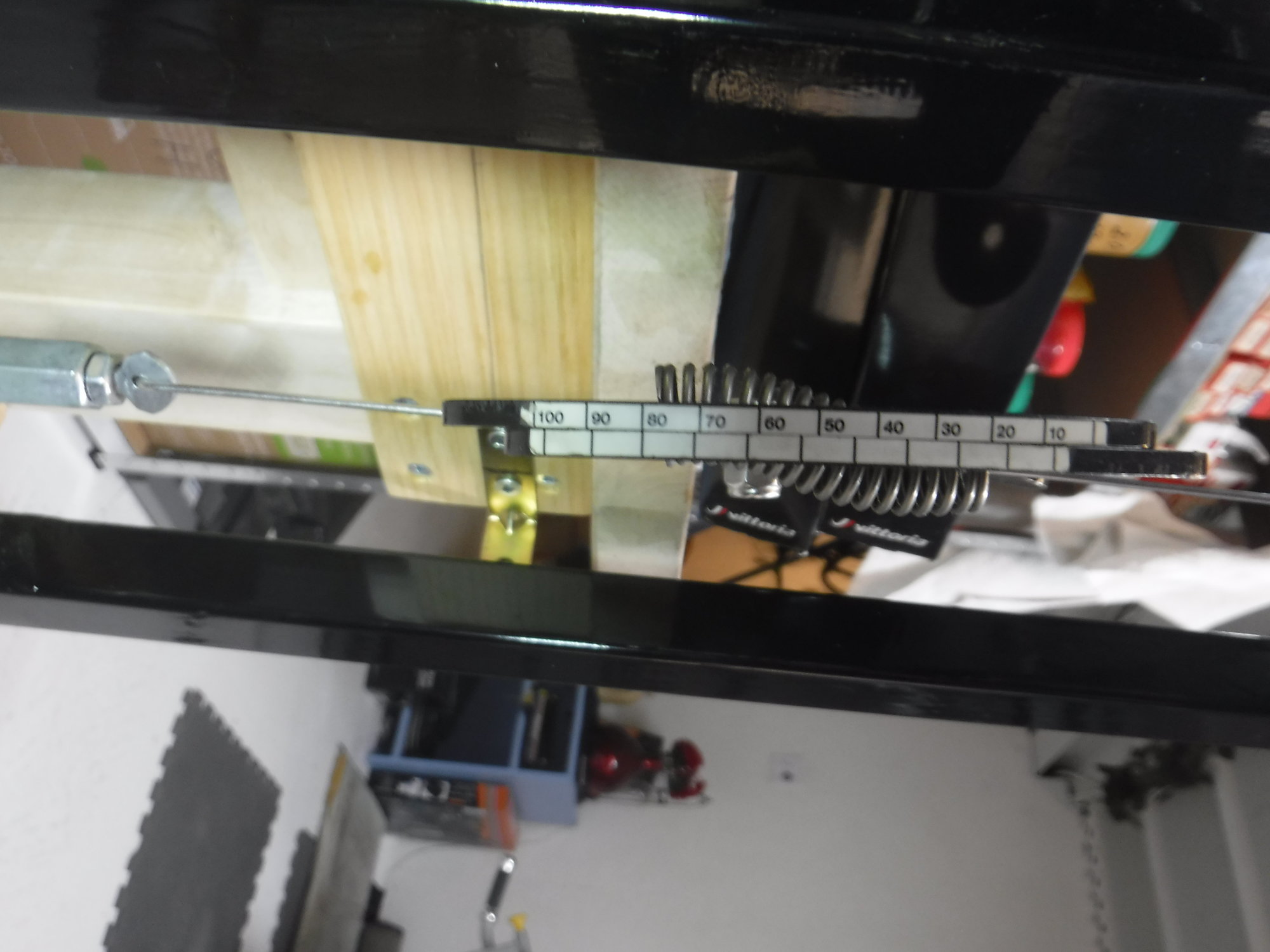Aside from the obvious design differences between the Park tool and the others in my arsenal, (Wheelsmith and Wheel Fanatyk) another significant difference is that the meter is adjustable, and every calibration chart is the same. The tool is adjusted to match the chart, whereas the others have a calibration chart that is unique to each tool and is printed after taking readings in a calibration jig.
Consequently, while the tool can be more or less accurately calibrated to a default spoke which would typically be a 2.0 mm stainless, the variances can become quite great on light gauge or aero spokes for example.
My Park tool is fairly accurately calibrated to a 2.0 stainless as can be seen in the photos below. At 100 kgf on my calibration fixture, the Park tool reads just under 24 . 24 is 107 on the chart.
I have had the Wheelsmith tool for something like 17 years, and 100 kgf corresponds to 80 on the chart. Still dead on after all these years, however when I build with bladed spokes such as CX Ray as I frequently do, I need to calibrate each time.
Another observation I would make, and I don't really know what impact this would have on accuracy is that the park tool increases the tension on the spoke to a much higher degree when taking the reading than my other meters do. A 6% increase as compared to about 1% for the Wheelsmith and Wheel Fanatyk.
In the photos you can see the heavy torsion spring and the adjusting screw on the Park tool as compared to the compression spring on the Wheelsmith. As low tech meters go, I find the Wheelsmith to be about as good as it gets.





